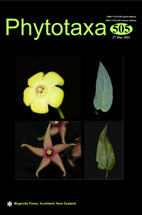Abstract
Amphibambusa hongheensis sp. nov. was collected from dead bamboo culms in Honghe County of Yunnan Province, China. The novel species is introduced based on the morpho-molecular approach. Morphologically, A. hongheensis fits well with Amphibambusa and is characterized by immersed, globose to subglobose ascomata, with protruding carbonaceous papilla, unitunicate, cylindrical to elongate fusiform, subsessile to short pedicellate asci with a J+, subapical ring, and fusiform, hyaline to pale brown, 1-septate ascospores, longitudinally striated, and surrounded by a thick mucilaginous sheath. Phylogenetic analyses of a concatenated ITS-LSU sequence dataset based on maximum-likelihood and Bayesian inference criteria revealed the phylogenetic affinity of A. hongheensis within Cainiaceae (Xylariales, Sordariomycetes). Amphibambusa hongheensis formed an independent subclade sister to A. bambusicola with moderate support (81% ML, 0.96 PP) and clustered with the genus Arecophila in Cainiaceae. Amphibambusa hongheensis is the second species accommodated in Amphibambusa and is reported from Yunnan, China, for the first time. Detailed description, illustration and updated phylogeny are provided.

